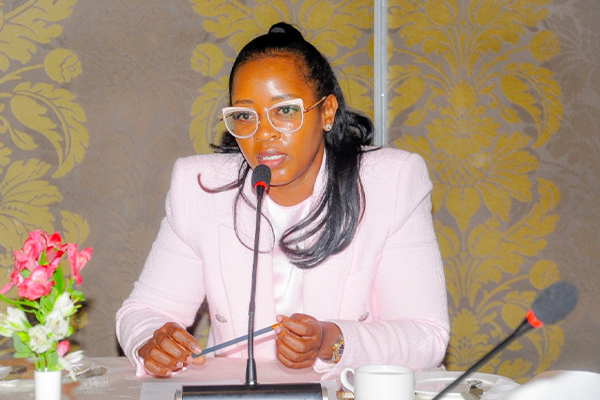By Phyllis Wakiaga, CEO of Kenya Association of Manufacturers and the UN Global Compact Representative for Kenya
For decades, the success of women in manufacturing has been mired by cultural perceptions of gender roles. But now, these old-fashioned attitudes are becoming obsolete and the true impact of women in industry is being realized.
Though the gaps in labour force participation between men and women remain large, the slight increase in the number of women joining manufacturing is a clear indication that women are eager to explore new and uncultured opportunities, particularly in manufacturing and value addition.
In Kenya, this is demonstrated by women who have ventured into the steel, building and construction sector. Few of them have been able to supply major projects in the country, which is a clear indication that women now have the capacity to challenge normative norms to scale up. Now more than ever, women are getting engaged in hard hitting sectors that are providing better capital investments, more profits and better returns to ensure sustainable economic growth.
Additionally, we are also seeing more women taking lead in manufacturing companies in the automotive, tobacco, chemical and furniture sectors. In fact, tremendous growth in the past few years, among these sectors, has been attributed to the women at the helm of these companies. These women are now becoming ultimate inspirational leaders in business in the country and in the continent.
But even with the new drive to include more women in industry, a variety of changeable hindrances continue to down efforts, resulting in limited sustainable social-economic growth and reduced competitiveness.
Access to finance remains the major cause of limited participation of women in industry, particularly the absence of innovative financial products for funding women start-ups in non-traditional manufacturing. In fact, a Forbes.com article articulates that limited funding is the first of 8 challenges affecting women in the industry, further stating that it is likely that women will be denied loans because of gender and cultural biases. It also states that a variety of institutions are more inclined to fund male-owned businesses.
The lack of appropriate Business Development Services also plays a role in hindering the success of women in manufacturing. This inefficiency leads to inappropriate mechanisms for assisting women entrepreneurs to adopt appropriate technology and innovation, which is necessary for enhancing production. Additionally, the absence of specialized professional and technical support to women-owned manufacturing enterprises and programmes that do not match global trends for training women entrepreneurs deter consistent and sustainable growth.
However, institutions are now starting to pay attention to the intermediate role that women are playing in growing our industry. In fact, the Women in Manufacturing (WIM) Programme housed at KAM is a setup that is steering women to firmly and courageously take up their position in industry. WIM Kenya aims to directly drive and shape the women in manufacturing agenda at national level.
Having taken up similar concepts from Women in Manufacturing (WIM) international, WIM Kenya is set to reignite the drive to increase the participation of Women in Industry.
A research study by KAM and International Center for Research on Women (ICRW) on the Women in Manufacturing in Kenya set to be unveiled in March next year, will pivot the advocacy drive of the KAM WIM program in Kenya. By providing concrete data on the necessary areas to improve, the research study will provide the essential foundation to champion for an enabling environment to encourage better participation of women in industry.
By increasing the participation of women in industry we, directly and indirectly, seek to achieve our overall economic goals in terms of increasing employment opportunities, advancing skills and innovation and providing them with financial security for themselves and their families, which results in better living conditions for the entire community.
The Writer is the CEO of Kenya Association of Manufacturers and the UN Global Compact Representative for Kenya. She can be reached at [email protected].
















